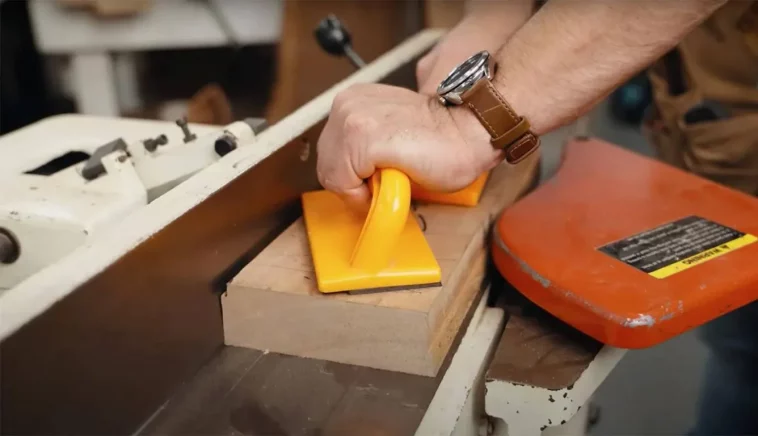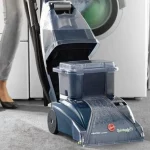A Comprehensive Guide to Using a Jointer Safely and Effectively
Woodworking enthusiasts understand the importance of precision and accuracy in crafting high-quality pieces. Central to achieving this level of craftsmanship is the proper use of tools like the jointer. In this guide, we’ll provide a brief overview of what a jointer is and its purpose in woodworking, along with essential safety precautions and step-by-step instructions for setting up and using a jointer.

Brief Overview of What a Jointer Is and Its Purpose in Woodworking:
A jointer is a woodworking tool designed to create a flat surface along the length of a board and to square up one edge. It achieves this by removing material from the surface of the wood with rotating blades. This process, known as jointing, ensures that boards have smooth, flat surfaces and square edges, making them easier to work with and creating stronger joints when joining multiple pieces together.
Safety Precautions:
Before diving into using a jointer, it’s crucial to prioritize safety:
- Safety Glasses: Protect your eyes from flying debris with safety glasses.
- Ear Protection: Guard against the noise of the machine with adequate ear protection.
- Proper Clothing: Wear appropriate clothing and avoid loose-fitting garments that could get caught in the machinery.
- Push Stick: Use a push stick to maintain downward pressure on the wood and keep your hands away from the spinning blades.
Setting Up the Jointer:
Proper setup is essential for optimal performance and safety:
- Adjusting the Infeed Table: Ensure the infeed table is level with the outfeed table to prevent snipe and achieve consistent cuts.
- Adjusting the Outfeed Table: Set the outfeed table height to match the depth of cut desired.
- Checking the Jointer Blades: Inspect the blades for sharpness and alignment, and adjust as necessary.
- Setting the Jointer Fence: Align the fence perpendicular to the jointer table for accurate edge jointing.
Preparing the Wood:
Before jointing, prepare the wood for optimal results:
- Checking Grain Direction: Joint with the grain for smoother cuts and reduced tear-out.
- Inspecting for Twists or Warps: Identify any defects in the wood that may affect jointing.
- Using a Straight Edge: Use a straight edge to identify high spots and ensure a flat surface.
Jointing Process:
With safety precautions in place and the jointer properly set up, proceed with the jointing process:
- Applying Downward Pressure: Maintain steady and consistent downward pressure on the wood as you feed it through the jointer.
- Feeding the Wood: Feed the wood into the jointer with a push block, keeping your hands clear of the spinning blades.
- Achieving Square Edges: Use the jointer to square up one edge of the board, creating a reference surface for further woodworking tasks.
FAQs About Using a Jointer in Woodworking:
Is using a jointer dangerous?
While jointers can be dangerous if not used properly, following safety precautions and techniques significantly reduces risks.
Can beginners use a jointer?
Yes, beginners can use a jointer with proper instruction and supervision. Start with small projects to gain confidence and skill.
How often should I sharpen jointer blades?
The frequency of sharpening depends on usage. Check blades regularly for dullness and sharpen as needed to maintain optimal performance.
What should I do if I encounter snipe while jointing?
Adjusting the setup of the jointer, such as the height of the outfeed table, can help minimize or eliminate snipe.
Can I joint boards with twists or warps?
Yes, jointers can correct minor twists or warps in boards, but severe defects may require additional techniques or tools.
How do I know if my jointer blades are aligned correctly?
Use a straight edge or dial indicators to check for alignment, and adjust the blades accordingly for precision jointing.
What types of wood are suitable for jointing?
Virtually any species of wood can be jointed to achieve flat surfaces and square edges, though some may require more care due to hardness or grain direction.
Can I joint wide boards on a standard jointer?
Yes, many standard jointers can accommodate wide boards, though larger models may be necessary for extremely wide or thick stock.
How can I prevent tear-out while jointing?
Joint with the grain whenever possible, and use sharp blades and appropriate feed pressure to minimize tear-out.
What maintenance does a jointer require?
Regular cleaning, blade inspection, and lubrication are essential for maintaining a jointer’s performance and longevity. Follow manufacturer guidelines for specific maintenance tasks.
Conclusion:
Mastering the use of a jointer is essential for any woodworking project requiring flat surfaces and square edges. By following safety precautions, properly setting up the jointer, and understanding the jointing process, woodworkers can achieve precise and professional results. Remember to always prioritize safety and take your time to ensure accuracy and efficiency in your woodworking endeavors. Happy jointin







GIPHY App Key not set. Please check settings